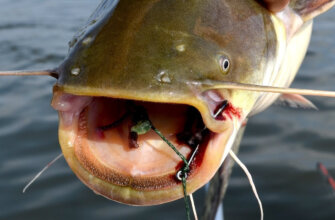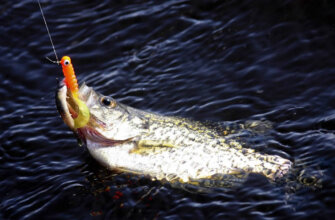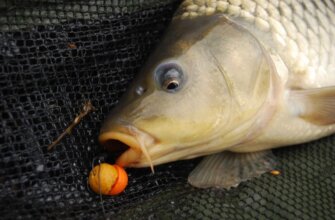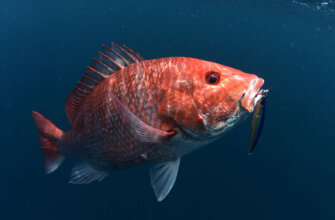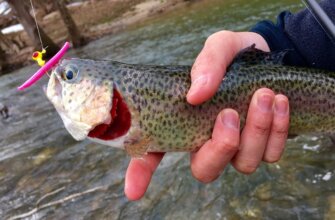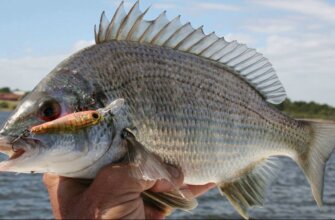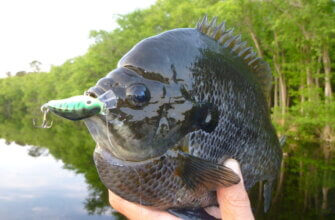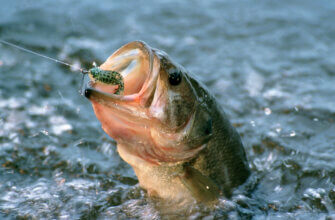Walleye fishing is a popular sport and recreational activity enjoyed by many anglers. Walleye is a freshwater fish species native to North America and is highly sought after for its tasty flesh and challenging nature.
10 best baits for walleye
When it comes to bait selection for walleye fishing, there are several effective options to consider. The choice of bait often depends on the time of year, water conditions, and the walleye’s feeding preferences.
Here are 10 effective baits for walleye:
- Jigs. Jigs are versatile and highly effective for walleye fishing. Use a variety of jig sizes and colors to match the conditions and preferences of the fish. Tip the jig with a live minnow, leech, or soft plastic bait for added attraction.
- Live Minnows. Minnows, such as fathead minnows or shiners, are natural prey for walleye and can be used on a jig, spinner rig, or a plain hook with a split shot. Hook the minnow through the lips or just behind the dorsal fin to keep it lively in the water.
- Nightcrawlers. Nightcrawlers are a classic bait that walleye find hard to resist. Thread a nightcrawler onto a hook or use them on a spinner rig. They can be effective during various fishing techniques, including casting, trolling, and drifting.
- Leeches. Leeches are another live bait option that walleye find irresistible. Hook the leech through the sucker or tail end to keep it alive and active. Leeches can be used on jigs, spinner rigs, or plain hooks.
- Crankbaits. Crankbaits imitate baitfish and can be an excellent choice for walleye, especially when targeting them in deeper water or along structure. Choose crankbaits that mimic the local forage and vary the speed of your retrieve to find what triggers the fish.
- Soft Plastic Baits. Soft plastic baits, such as twister tails, grubs, and swimbaits, can be used on jigs or plain hooks. Their lifelike action and versatility make them effective for walleye fishing in various conditions.
- Blade Baits. Blade baits, like the classic jigging spoons, create vibrations and flash that attract walleye. Jig them vertically near the bottom or cast them and work them back to the boat to entice strikes.
- Spinnerbaits. Spinnerbaits with a single or double blade can be effective for covering water and locating active walleye. Choose different blade colors and sizes to experiment and find what works best on a particular day.
- Gulp! Alive Baits. Gulp! Alive baits are soft plastic baits infused with scent attractants that can entice walleye to strike. Their durability and scent dispersion make them a popular choice among anglers.
- Trolling Lures. When targeting walleye in open water or along weed edges, trolling with lures like crankbaits, stickbaits, or spoons can be effective. Vary the speed, depth, and colors until you find what triggers the fish.
Jigs
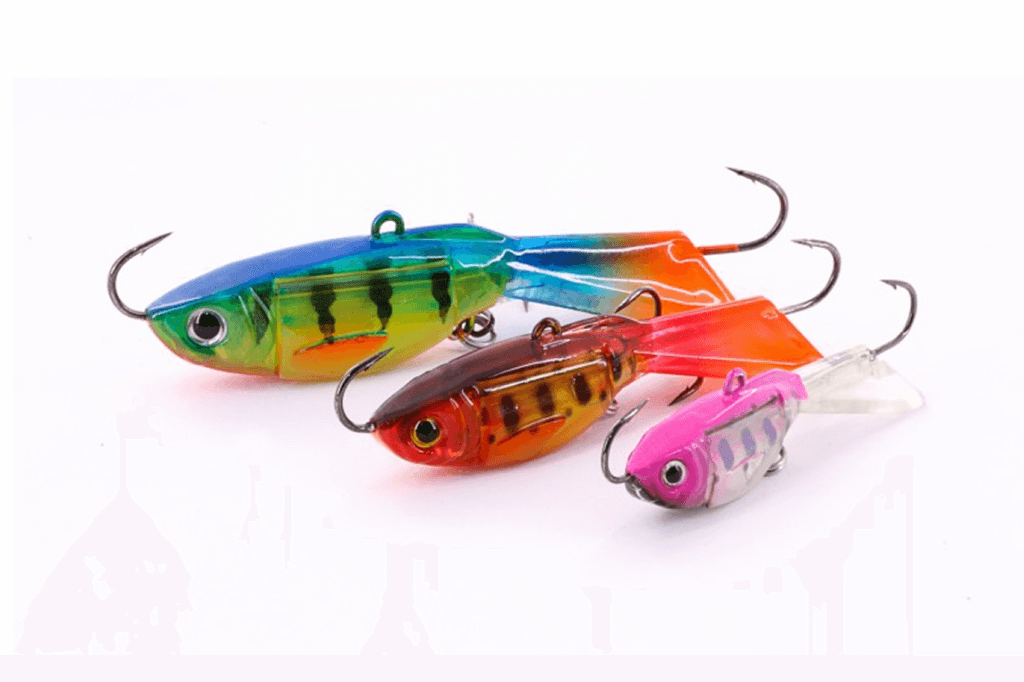
Walleye fishing is a popular pursuit among anglers, and using jigs can be an effective technique for catching these fish.
Here are some types of jigs commonly used for walleye fishing:
- Round-head Jigs: These are the most commonly used jigs for walleye fishing. They feature a round or bullet-shaped head with a hook attached. Round-head jigs are versatile and work well in various fishing situations. They are available in different weights, allowing you to adjust the depth at which you fish.
- Stand-up Jigs: Stand-up jigs have a flat-bottomed head design that causes them to stand upright on the bottom when at rest. This presentation mimics a baitfish feeding off the bottom and can be very enticing to walleye. The stand-up design also helps reduce snagging.
- Hair Jigs: Hair jigs are typically made with deer hair or other natural fibers tied to the hook. The hair provides lifelike movement in the water, making them appealing to walleye. Hair jigs are effective in cold water and when walleye are in a finicky mood.
- Minnow Jigs: Minnow jigs are designed to imitate a minnow, which is a primary food source for walleye. These jigs have a slim profile, often with a soft plastic or hair body and a small spinner or blade. The addition of the spinner adds flash and vibration to attract walleye.
- Grub Jigs: Grub jigs consist of a soft plastic body with a tail that undulates in the water, imitating the movement of a baitfish. These jigs can be effective when walleye are targeting smaller prey or in situations where a subtle presentation is needed.
- Weedless Jigs: When fishing in weedy areas, using weedless jigs can help reduce snagging. These jigs feature a weed guard that prevents the hook from getting caught in vegetation. They allow you to fish close to cover without constantly getting hung up.
Live Minnows
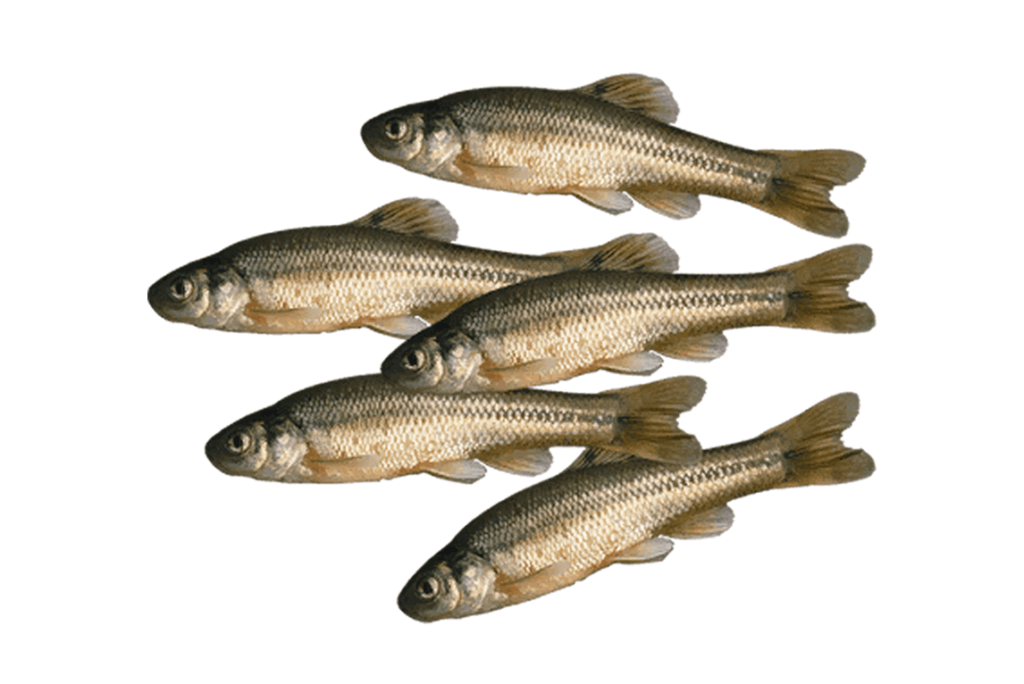
Live minnows are a popular and effective bait choice for targeting walleye. Walleye are known to be voracious predators and are often drawn to the natural movements and scent of live minnows.
When using live minnows for walleye fishing, it’s important to choose healthy and lively specimens. Hook the minnow through the lips, back, or tail using an appropriate size hook to ensure it stays secure and remains active in the water. Cast the minnow near likely walleye holding areas such as weed beds, rocky structures, drop-offs, or points. Allow the minnow to swim naturally or use a slow retrieve to imitate its movements. Walleye are known to be particularly active during low light conditions, such as early mornings, evenings, or overcast days. Pay attention to any signs of bites or changes in resistance, as walleye can sometimes bite softly or have a light touch. It’s important to maintain sensitivity and feel for any strikes.
Using a medium-light to medium fishing setup with sensitive rods and light to moderate lines is suitable for fishing with live minnows. Fluorocarbon or monofilament lines are commonly used due to their low visibility in the water. It’s also helpful to have a variety of hook sizes on hand to match the size of the minnows you’re using. When fishing with live minnows, it’s essential to keep them fresh and lively by using a well-aerated bait bucket or livewell. Changing the water regularly and avoiding extreme temperature changes will help maintain the vitality of the minnows. Remember to comply with local regulations regarding the use of live bait and fishing techniques when targeting walleye.
Nightcrawlers
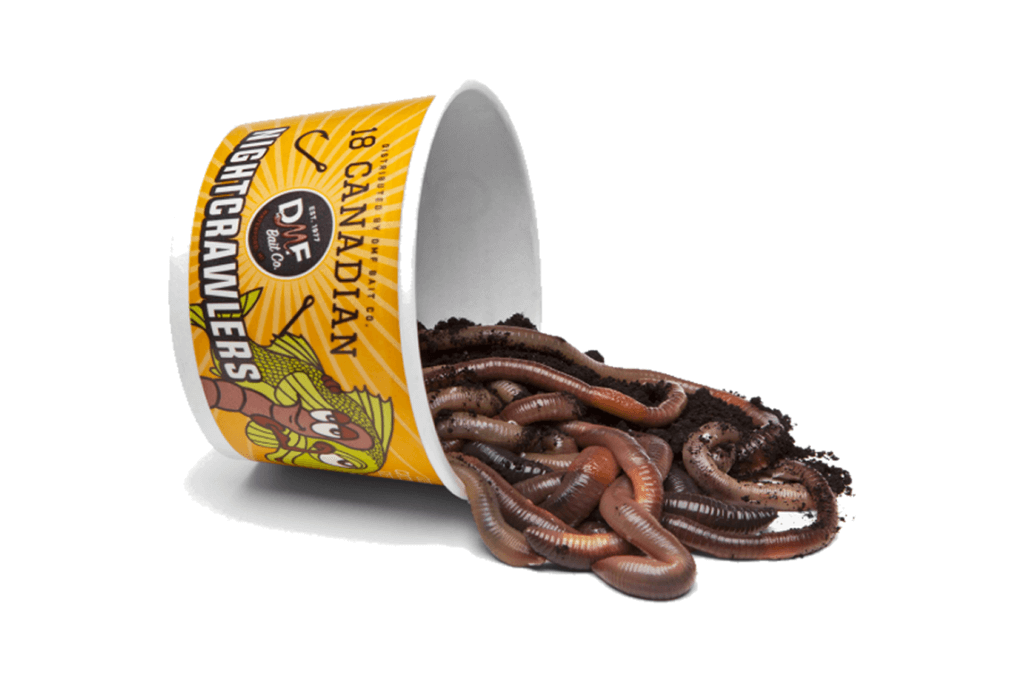
Nightcrawlers, also known as earthworms, are a versatile and popular bait choice for targeting walleye.
When using nightcrawlers for walleye fishing, it’s important to choose healthy and lively worms. Thread the nightcrawler onto an appropriate size hook, ensuring that the hook is securely embedded in the worm. Cast the nightcrawler near likely walleye holding areas such as weed beds, rocky structures, drop-offs, or points. Allow the nightcrawler to move naturally in the water or use a slow retrieve to mimic its wriggling action. Walleye are known to be more active during low light conditions, such as early mornings, evenings, or overcast days. Pay attention to any signs of bites or changes in resistance, as walleye can sometimes bite softly or have a light touch. It’s important to maintain sensitivity and feel for any strikes.
Using a medium-light to medium fishing setup with sensitive rods and light to moderate lines is suitable for fishing with nightcrawlers. Fluorocarbon or monofilament lines are commonly used due to their low visibility in the water. It’s also helpful to have a variety of hook sizes on hand to match the size of the nightcrawler. Keeping the nightcrawlers cool, moist, and in good condition is important for their effectiveness. Place them in a worm container or keep them refrigerated to maintain their freshness. Remember to comply with local regulations regarding the use of live bait and fishing techniques when targeting walleye.
Leeches
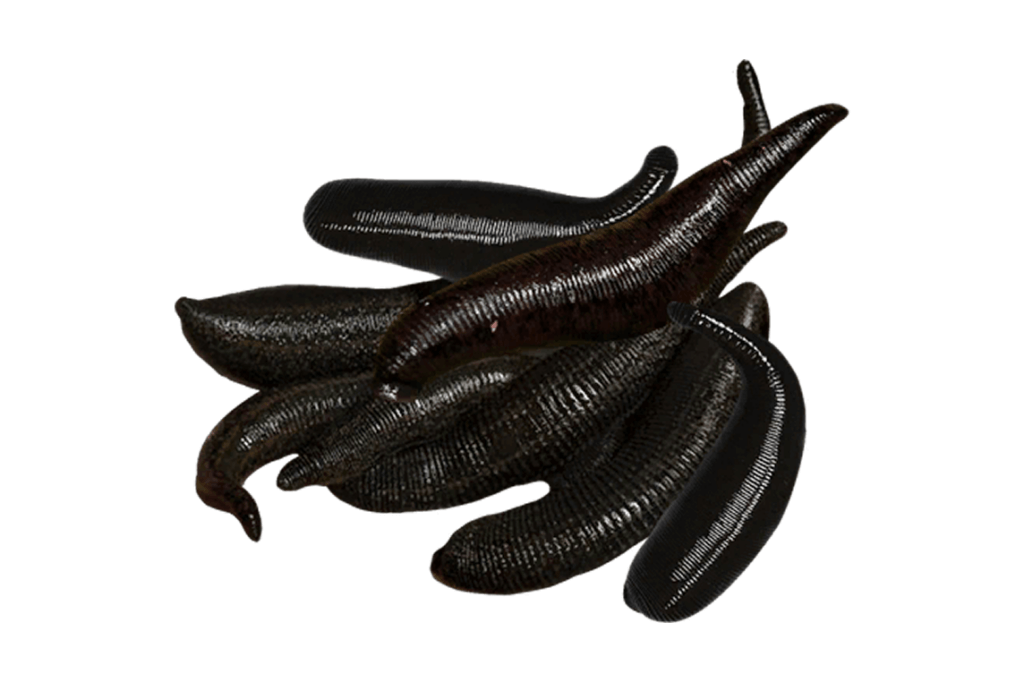
Leeches are a popular and effective bait choice for targeting walleye. Walleye are known to be fond of leeches due to their natural appearance and enticing movement in the water.
When using leeches for walleye fishing, it’s important to choose healthy and active specimens. Hook the leech through the sucker end or the thicker part of its body using an appropriate size hook to ensure it stays secure. Cast the leech near likely walleye holding areas such as weed beds, rocky structures, drop-offs, or points. Allow the leech to swim naturally or use a slow retrieve to imitate its movement. Walleye are often more active during low light conditions, such as early mornings, evenings, or overcast days. Pay attention to any signs of bites or changes in resistance, as walleye can sometimes bite softly or have a light touch. It’s important to maintain sensitivity and feel for any strikes.
Using a medium-light to medium fishing setup with sensitive rods and light to moderate lines is suitable for fishing with leeches. Fluorocarbon or monofilament lines are commonly used due to their low visibility in the water. It’s also helpful to have a variety of hook sizes on hand to match the size of the leeches you’re using. When fishing with leeches, keep them cool and moist to maintain their liveliness. Place them in a leech container or keep them refrigerated until you’re ready to use them. Remember to comply with local regulations regarding the use of live bait and fishing techniques when targeting walleye.
Crankbaits
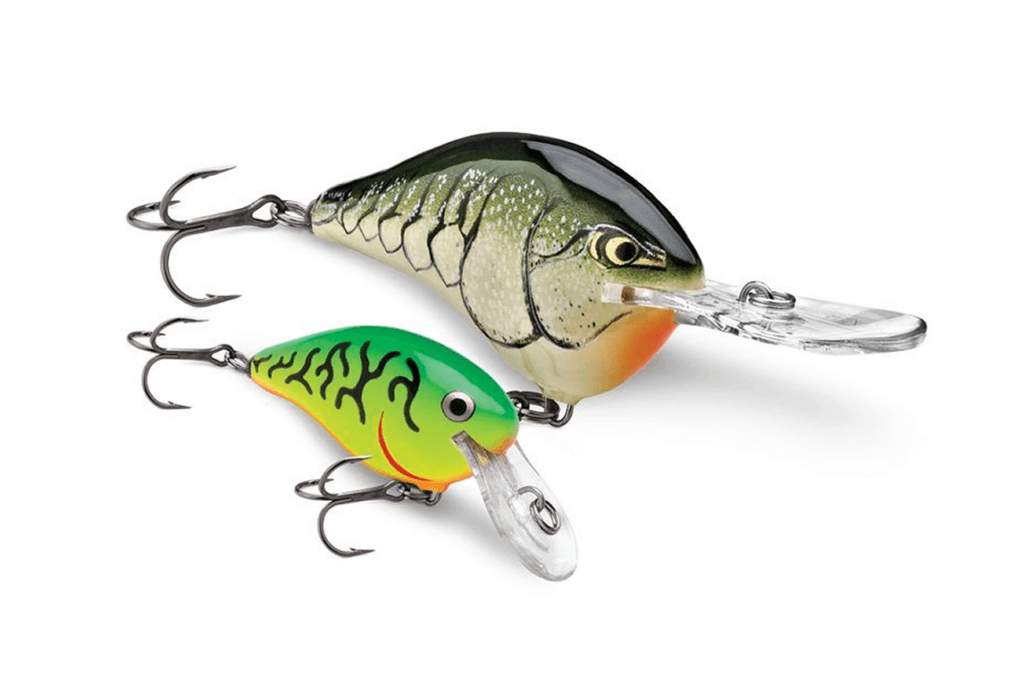
Crankbaits are a popular and effective lure choice for targeting walleye. These lures are designed to imitate baitfish and can be used to cover a wide range of depths and water conditions.
When using crankbaits for walleye fishing, it’s important to choose the appropriate size and diving depth based on the fishing conditions and depth you are targeting. Cast the crankbait near likely walleye holding areas such as rocky structures, weed edges, drop-offs, or points. Retrieve the crankbait at a moderate to fast pace, allowing it to dive and swim in a lifelike manner. Vary your retrieval speed and depth to find the most effective presentation for the walleye in your fishing area. Pay attention to any strikes or changes in resistance, as walleye can sometimes hit crankbaits aggressively. It’s important to maintain sensitivity and feel for any bites or subtle changes in the lure’s action.
Using a medium to medium-heavy fishing setup with a fast-action rod and a reel with a smooth drag is suitable for crankbait fishing for walleye. Choose a fishing line that matches the lure weight and the desired depth range you want to target. Fluorocarbon or monofilament lines are commonly used for crankbait fishing due to their buoyancy and low visibility in the water. Experiment with different colors and patterns to find the most effective crankbait for the prevailing conditions and walleye preferences. Crankbaits can be effective year-round for walleye, but they are particularly productive during the spring and fall when walleye are actively feeding. Remember to adjust your crankbait selection and retrieve speed based on the behavior and preferences of the walleye in your fishing area.
Soft Plastic Baits
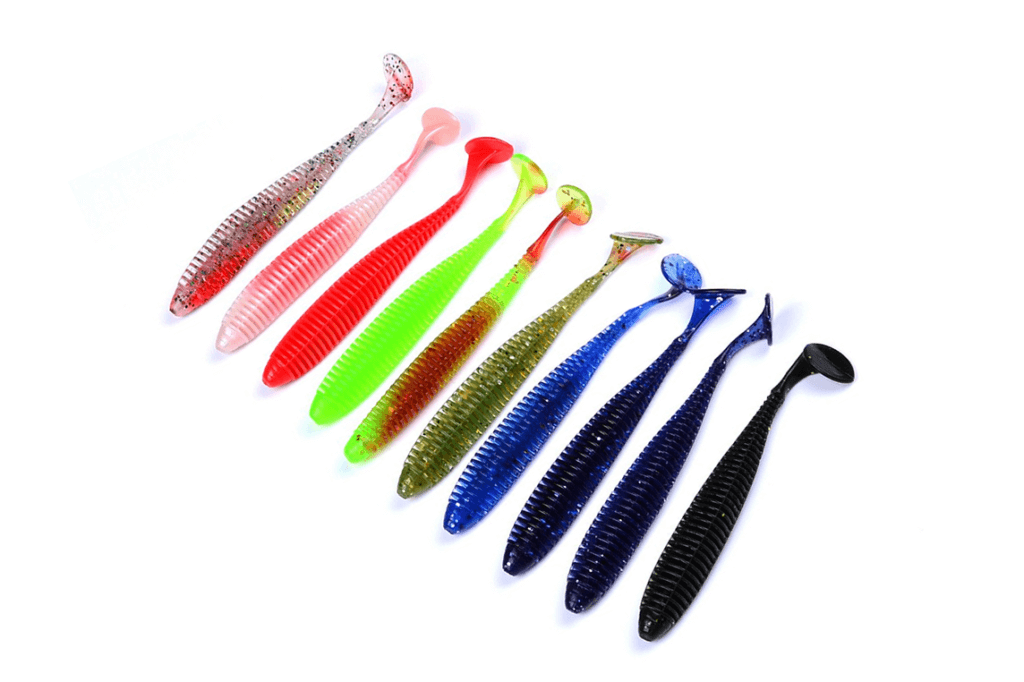
Soft plastic baits are a versatile and effective lure choice for targeting walleye. These baits come in various shapes, sizes, and colors, and they can be rigged in different ways to imitate baitfish or other prey species.
When using soft plastic baits for walleye fishing, it’s important to choose baits that closely resemble the forage in the water you’re fishing. Common soft plastic baits for walleye include paddle-tail swimbaits, jerkbaits, grubs, and worms. Rig the soft plastic bait on an appropriate size hook, such as a jighead or a Texas rig, depending on the fishing conditions and presentation you desire. Cast the bait near likely walleye holding areas such as weed beds, rocky structures, drop-offs, or points. Retrieve the soft plastic bait with a slow and steady retrieve, or use a jigging motion to imitate the natural movement of a wounded baitfish. Vary your retrieval speed and depth to find the most effective presentation for the walleye in your fishing area. Pay attention to any bites or changes in resistance, as walleye can sometimes bite softly or have a light touch. It’s important to maintain sensitivity and feel for any strikes.
Using a medium to medium-light fishing setup with sensitive rods and light to moderate lines is suitable for fishing with soft plastic baits. Fluorocarbon or monofilament lines are commonly used due to their low visibility in the water. Experiment with different colors, sizes, and retrieval techniques to find the most effective soft plastic bait for the prevailing conditions and walleye preferences. Soft plastic baits can be effective year-round for walleye, but they are particularly productive during the spring and fall when walleye are actively feeding. Remember to adjust your bait selection and presentation based on the behavior and preferences of the walleye in your fishing area.
Here are some popular soft plastic bait options for walleye fishing:
- Twister Tails: Twister tails are a classic choice for walleye fishing. These soft plastic grubs feature a curly tail that produces enticing action in the water. They can be used with a jighead or on a spinner rig.
- Paddle Tails: Paddle tail baits have a wide, flat tail that creates a thumping action in the water, mimicking the movement of a swimming baitfish. They work well when retrieved at a slow to medium speed.
- Ringworms: Ringworms have a slender, ribbed body with a small tail. Their profile closely resembles aquatic worms or leeches, which are natural prey for walleye. Ringworms can be rigged on a jighead or used on a drop-shot rig.
- Jerkbaits: Soft plastic jerkbaits imitate injured baitfish and can be effective for triggering reaction strikes from walleye. These baits typically have a slender, minnow-like profile and are designed to be twitched or jerked to create erratic movements.
- Grubs: Grubs are versatile soft plastic baits that come in various sizes and colors. They can be rigged on a jighead, used on a spinner rig, or even tipped on a live bait rig. The curly tail or straight body of grubs provides subtle action in the water.
- Swimbaits: Soft plastic swimbaits are designed to mimic the swimming motion of baitfish. They often feature a realistic body shape and a paddle tail for lifelike movement. Swimbaits can be effective when retrieved steadily or used on a slow-rolling retrieve.
Blade Baits
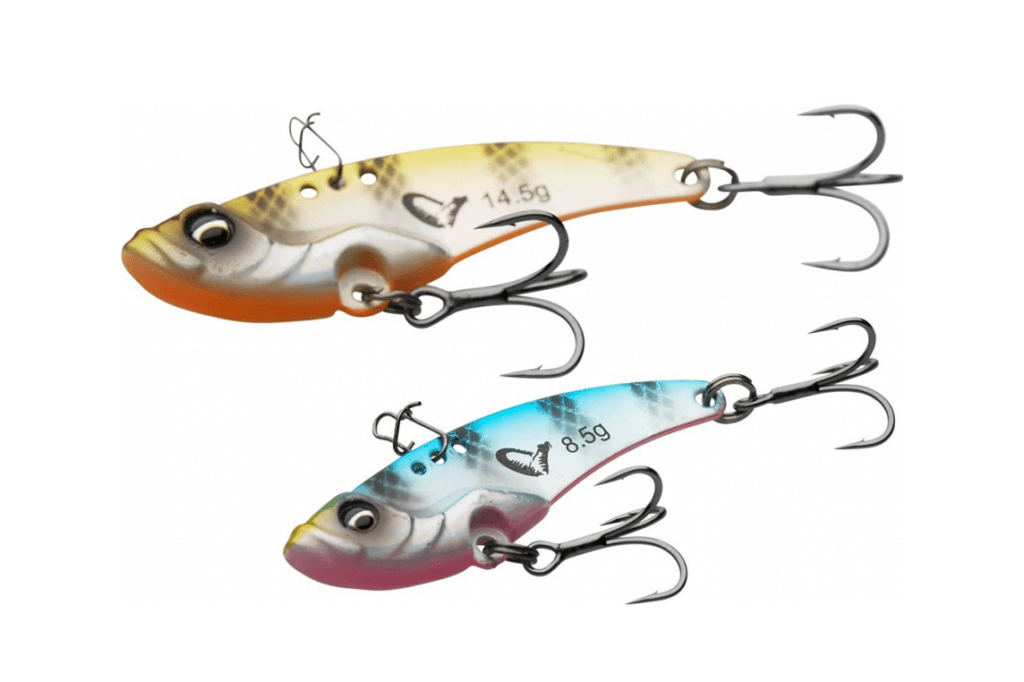
Blade baits are a popular and effective lure choice for targeting walleye. These lures feature a metal blade that vibrates and produces a distinct thumping action in the water, which can be highly enticing to walleye.
When using blade baits for walleye fishing, it’s important to choose baits that have a realistic appearance and quality construction. Cast the blade bait near likely walleye holding areas such as rocky structures, drop-offs, or points. Allow the bait to sink to the desired depth and then retrieve it with a combination of lifts and drops, creating an erratic and fluttering action. This mimics the movement of injured or dying baitfish and can trigger aggressive strikes from walleye. Vary your retrieval speed and depth to find the most effective presentation for the walleye in your fishing area. Pay attention to any strikes or changes in resistance, as walleye can sometimes hit blade baits aggressively. It’s important to maintain sensitivity and feel for any bites or subtle changes in the lure’s action.
Using a medium to medium-heavy fishing setup with a fast-action rod and a reel with a smooth drag is suitable for fishing with blade baits. Choose a fishing line that matches the lure weight and the desired depth range you want to target. Fluorocarbon or braided lines are commonly used for their sensitivity and low stretch properties. Experiment with different blade bait colors and sizes to find the most effective lure for the prevailing conditions and walleye preferences. Blade baits are particularly effective during colder water temperatures and can be successful year-round for walleye. Remember to adjust your lure selection and retrieve speed based on the behavior and preferences of the walleye in your fishing area.
Spinnerbaits
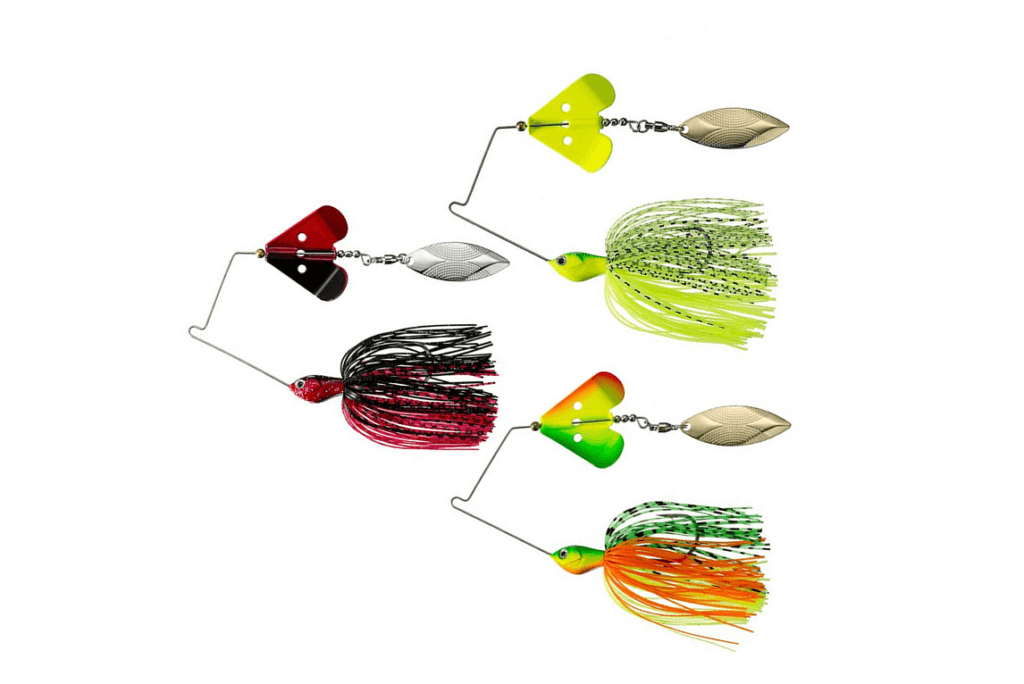
Spinnerbaits are a versatile and effective lure choice for targeting walleye. These lures consist of a metal blade or blades that spin around a central wire, creating both visual and vibrational attraction.
When using spinnerbaits for walleye fishing, it’s important to choose baits with the appropriate blade size, color, and style for the prevailing conditions and walleye preferences. Cast the spinnerbait near likely walleye holding areas such as weed beds, rocky structures, drop-offs, or points. Retrieve the spinnerbait at a moderate to fast pace, allowing the blades to spin and create flash and vibration in the water. Vary your retrieval speed and depth to find the most effective presentation for the walleye in your fishing area. Pay attention to any strikes or changes in resistance, as walleye can sometimes hit spinnerbaits aggressively. It’s important to maintain sensitivity and feel for any bites or subtle changes in the lure’s action.
Using a medium to medium-heavy fishing setup with a fast-action rod and a reel with a smooth drag is suitable for fishing with spinnerbaits. Choose a fishing line that matches the lure weight and the desired depth range you want to target. Fluorocarbon or braided lines are commonly used for their sensitivity and low stretch properties. Experiment with different spinnerbait colors and blade configurations to find the most effective lure for the prevailing conditions and walleye preferences. Spinnerbaits can be effective year-round for walleye, but they are particularly productive during the spring and fall when walleye are actively feeding. Remember to adjust your lure selection and retrieve speed based on the behavior and preferences of the walleye in your fishing area.
Gulp! Alive Baits
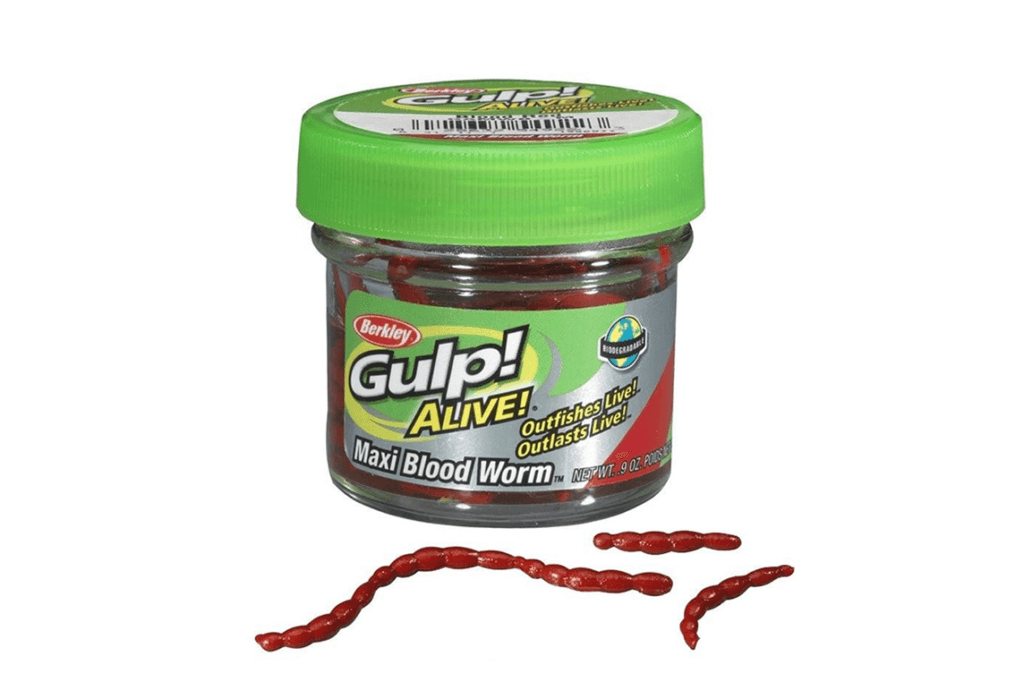
Gulp! Alive baits are a popular and effective bait choice for targeting walleye. These baits are made of biodegradable materials and are infused with a powerful scent attractant that can entice walleye to bite. Gulp! Alive baits come in various shapes and sizes, such as minnows, grubs, worms, and leeches, to imitate the natural prey of walleye.
When using Gulp! Alive baits for walleye fishing, it’s important to choose baits that closely resemble the forage in the water you’re fishing. Rig the bait on an appropriate size hook or jighead based on the fishing conditions and presentation you desire. Cast the bait near likely walleye holding areas such as weed beds, rocky structures, drop-offs, or points. Retrieve the bait with a slow and steady retrieve or use a jigging motion to imitate the natural movement of the prey species. Vary your retrieval speed and depth to find the most effective presentation for the walleye in your fishing area. Pay attention to any bites or changes in resistance, as walleye can sometimes bite softly or have a light touch. It’s important to maintain sensitivity and feel for any strikes.
Using a medium to medium-light fishing setup with sensitive rods and light to moderate lines is suitable for fishing with Gulp! Alive baits. Fluorocarbon or monofilament lines are commonly used due to their low visibility in the water. Experiment with different colors, sizes, and retrieval techniques to find the most effective Gulp! Alive bait for the prevailing conditions and walleye preferences. Gulp! Alive baits can be effective year-round for walleye, but they are particularly productive when walleye are more sluggish or during periods of low natural baitfish activity. Remember to adjust your bait selection and presentation based on the behavior and preferences of the walleye in your fishing area.
Trolling Lures
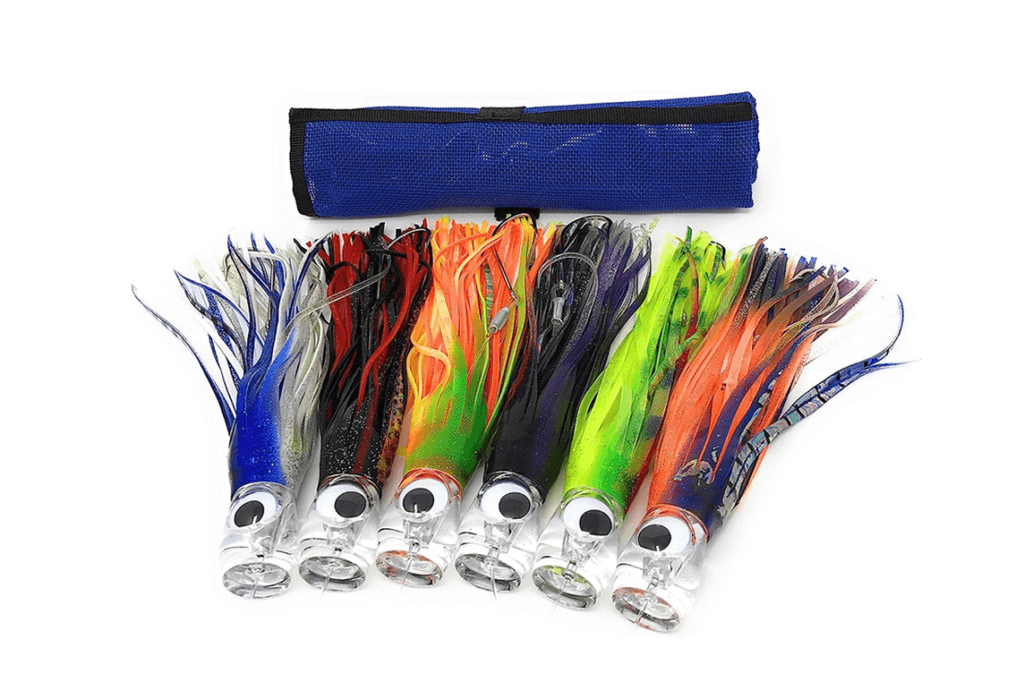
Trolling lures are a popular and effective choice for targeting walleye. These lures are specifically designed to be pulled through the water behind a moving boat, creating an enticing presentation that can attract walleye from a distance.
When using trolling lures for walleye fishing, it’s important to choose lures that closely resemble the baitfish or prey species that walleye commonly feed on. Trolling lures for walleye can come in various shapes and sizes, such as crankbaits, minnow imitations, or spoon-style lures. Choose lures that are appropriate for the depth you wish to fish and the speed at which you are trolling. Start by trolling at a slow to moderate speed and adjust as needed based on the walleye’s activity level and water conditions. When trolling, it’s important to cover a wide area of water, targeting likely walleye holding areas such as points, weed edges, drop-offs, or structure.
Experiment with different lure colors, sizes, and depths until you find the most effective combination for the prevailing conditions and walleye preferences. Pay attention to any strikes or changes in resistance, as walleye can sometimes hit trolling lures aggressively. It’s important to maintain sensitivity and feel for any bites or subtle changes in the lure’s action. Using trolling rods and reels specifically designed for this technique is recommended, as they provide the necessary strength and control for pulling lures through the water. Trolling lines, such as monofilament or braided lines, are commonly used due to their durability and low stretch properties. Attach any necessary weights or divers to achieve the desired depth range. Trolling lures can be effective year-round for walleye, but they are particularly productive during the summer months when walleye are often found in deeper water or during periods of low light conditions. Remember to adjust your lure selection, speed, and depth based on the behavior and preferences of the walleye in your fishing area.

